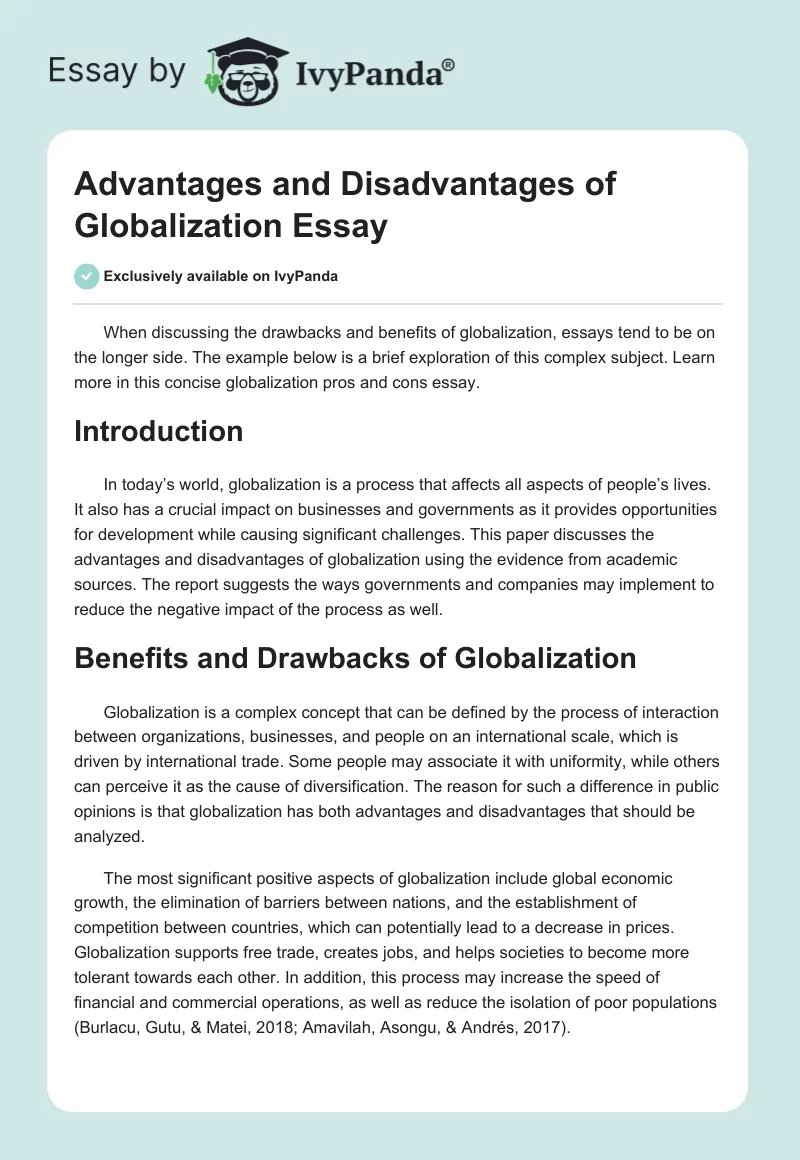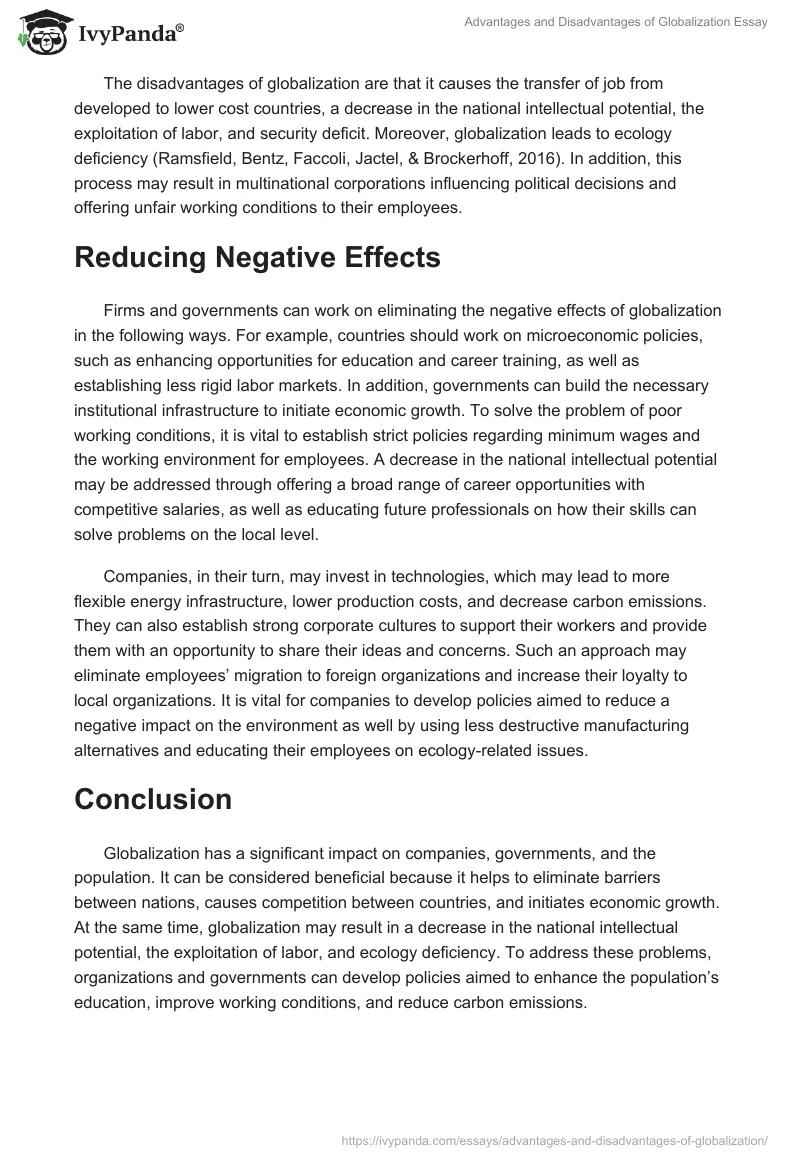When discussing the drawbacks and benefits of globalization, essays tend to be on the longer side. The example below is a brief exploration of this complex subject. Learn more in this concise globalization pros and cons essay.
Introduction
In today’s world, globalization is a process that affects all aspects of people’s lives. It also has a crucial impact on businesses and governments as it provides opportunities for development while causing significant challenges. This paper discusses the advantages and disadvantages of globalization using evidence from academic sources. The report also suggests how governments and companies may implement to reduce the negative impact of the process.
Benefits and Drawbacks of Globalization
Globalization is a complex concept that can be defined by the process of interaction between organizations, businesses, and people on an international scale, which is driven by international trade. Some people may associate it with uniformity, while others can perceive it as the cause of diversification. The reason for such a difference in public opinion is that globalization has both advantages and disadvantages that should be analyzed.
The most significant positive aspects of globalization include global economic growth, the elimination of barriers between nations, and the establishment of competition between countries, which can potentially lead to a decrease in prices. Globalization supports free trade, creates jobs, and helps societies to become more tolerant towards each other. In addition, this process may increase the speed of financial and commercial operations, as well as reduce the isolation of poor populations (Burlacu, Gutu, & Matei, 2018; Amavilah, Asongu, & Andrés, 2017).
The disadvantages of globalization are that it causes the transfer of jobs from developed to lower-cost countries, a decrease in the national intellectual potential, the exploitation of labor, and a security deficit. Moreover, globalization leads to ecological deficiency (Ramsfield, Bentz, Faccoli, Jactel, & Brockerhoff, 2016). In addition, this process may result in multinational corporations influencing political decisions and offering unfair working conditions to their employees.
Reducing Negative Effects
Firms and governments can work on eliminating the negative effects of globalization in the following ways. For example, countries should work on microeconomic policies, such as enhancing opportunities for education and career training and establishing less rigid labor markets. In addition, governments can build the necessary institutional infrastructure to initiate economic growth. To solve the problem of poor working conditions, it is vital to establish strict policies regarding minimum wages and the working environment for employees. A decrease in the national intellectual potential may be addressed by offering a broad range of career opportunities with competitive salaries, as well as educating future professionals on how their skills can solve problems on the local level.
Companies, in their turn, may invest in technologies that may lead to more flexible energy infrastructure, lower production costs, and decrease carbon emissions. They can also establish strong corporate cultures to support their workers and provide them with an opportunity to share their ideas and concerns. Such an approach may eliminate employees’ migration to foreign organizations and increase their loyalty to local organizations. It is vital for companies to develop policies aimed at reducing a negative impact on the environment as well by using less destructive manufacturing alternatives and educating their employees on ecology-related issues.
Conclusion
Globalization has a significant impact on companies, governments, and the population. It can be considered beneficial because it helps to eliminate barriers between nations, causes competition between countries, and initiates economic growth. At the same time, globalization may result in a decrease in the national intellectual potential, the exploitation of labor, and ecology deficiency. To address these problems, organizations and governments can develop policies to enhance the population’s education, improve working conditions, and reduce carbon emissions.
References
Amavilah, V., Asongu, S. A., & Andrés, A. R. (2017). Effects of globalization on peace and stability: Implications for governance and the knowledge economy of African countries. Technological Forecasting and Social Change, 122(C), 91-103.
Burlacu, S., Gutu, C., & Matei, F. O. (2018). Globalization – Pros and cons. Calitatea, 19(S1), 122-125.
Ramsfield, T. D., Bentz, B. J., Faccoli, M., Jactel, H., & Brockerhoff, E. G. (2016). Forest health in a changing world: Effects of globalization and climate change on forest insect and pathogen impacts. Forestry, 89(3), 245-252.


